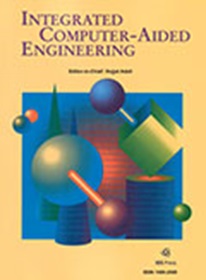Constructing ensembles of dispatching rules for multi-objective tasks in the unrelated machines environment
IF 5.8
2区 计算机科学
Q1 COMPUTER SCIENCE, ARTIFICIAL INTELLIGENCE
引用次数: 0
Abstract
Scheduling is a frequently studied combinatorial optimisation that often needs to be solved under dynamic conditions and to optimise multiple criteria. The most commonly used method for solving dynamic problems are dispatching rules (DRs), simple constructive heuristics that build the schedule incrementally. Since it is difficult to design DRs manually, they are often created automatically using genetic programming. Although such rules work well, their performance is still limited and various methods, especially ensemble learning, are used to improve them. So far, ensembles have only been used in the context of single-objective scheduling problems This study aims to investigate the possibility of constructing ensembles of DRs for solving multi-objective (MO) scheduling problems. To this end, an existing ensemble construction method called SEC is adapted by extending it with non-dominated sorting to construct Pareto fronts of ensembles for a given MO problem. In addition, the algorithms NSGA-II and NSGA-III were adapted to construct ensembles and compared with the SEC method to demonstrate their effectiveness. All methods were evaluated on four MO problems with different number of criteria to be optimised. The results show that ensembles of DRs achieve better Pareto fronts compared to individual DRs. Moreover, the results show that SEC achieves equally good or even slightly better results than NSGA-II and NSGA-III when constructing ensembles, while it is simpler and slightly less computationally expensive. This shows the potential of using ensembles to increase the performance of individual DRs for MO problems.在不相关机器环境下构建多目标任务调度规则集
调度是一个经常被研究的组合优化问题,通常需要在动态条件下求解,并且需要优化多个准则。解决动态问题最常用的方法是调度规则(dr),这是一种简单的建设性启发式方法,可以增量地构建调度。由于很难手动设计dr,因此它们通常使用遗传编程自动创建。尽管这些规则效果很好,但它们的性能仍然有限,需要使用各种方法,特别是集成学习来改进它们。到目前为止,集成仅用于单目标调度问题,本研究旨在探讨构建多目标调度问题集成的可能性。为此,对已有的集成构建方法SEC进行了改进,并将其扩展为非支配排序,以构造给定MO问题的集成的Pareto前沿。此外,将NSGA-II和NSGA-III算法用于构建集成,并与SEC方法进行了比较,以验证其有效性。用不同数量的准则对四个MO问题进行了评价。结果表明,与单独的DRs相比,DRs组合具有更好的Pareto front效果。此外,结果表明,SEC在构建集成时取得了与NSGA-II和NSGA-III相同甚至略好的结果,而它更简单,计算成本略低。这显示了使用集成来提高单个dr在MO问题上的性能的潜力。
本文章由计算机程序翻译,如有差异,请以英文原文为准。
求助全文
约1分钟内获得全文
求助全文
来源期刊

Integrated Computer-Aided Engineering
工程技术-工程:综合
CiteScore
9.90
自引率
21.50%
发文量
21
审稿时长
>12 weeks
期刊介绍:
Integrated Computer-Aided Engineering (ICAE) was founded in 1993. "Based on the premise that interdisciplinary thinking and synergistic collaboration of disciplines can solve complex problems, open new frontiers, and lead to true innovations and breakthroughs, the cornerstone of industrial competitiveness and advancement of the society" as noted in the inaugural issue of the journal.
The focus of ICAE is the integration of leading edge and emerging computer and information technologies for innovative solution of engineering problems. The journal fosters interdisciplinary research and presents a unique forum for innovative computer-aided engineering. It also publishes novel industrial applications of CAE, thus helping to bring new computational paradigms from research labs and classrooms to reality. Areas covered by the journal include (but are not limited to) artificial intelligence, advanced signal processing, biologically inspired computing, cognitive modeling, concurrent engineering, database management, distributed computing, evolutionary computing, fuzzy logic, genetic algorithms, geometric modeling, intelligent and adaptive systems, internet-based technologies, knowledge discovery and engineering, machine learning, mechatronics, mobile computing, multimedia technologies, networking, neural network computing, object-oriented systems, optimization and search, parallel processing, robotics virtual reality, and visualization techniques.
 求助内容:
求助内容: 应助结果提醒方式:
应助结果提醒方式:


